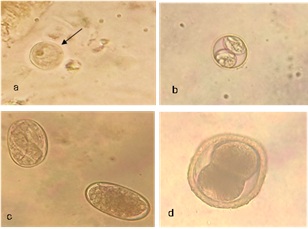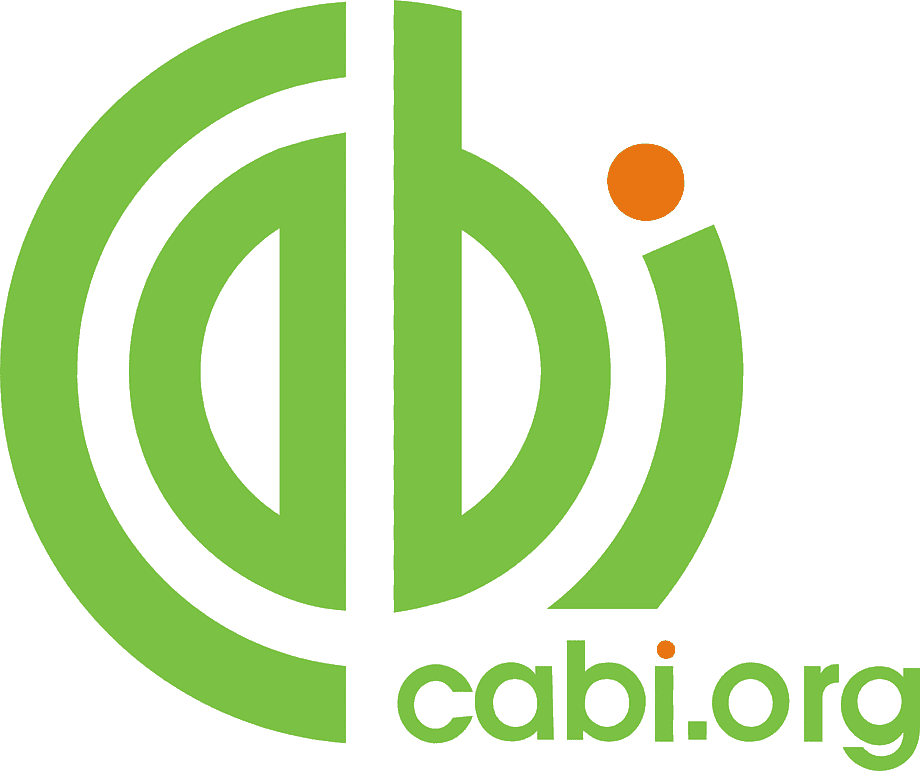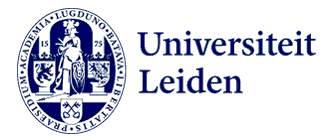Diversity and potential of nuisance flies as vectors of gastrointestinal parasitic diseases in traditional markets in Surabaya City
DOI:
https://doi.org/10.46549/jipvet.v15i2.545Keywords:
Nuisance flies, Gastrointestinal parasites, Soil-Transmitted Helminths (STH), Traditional markets, Vector-borne transmissionAbstract
Nuisance flies are known mechanical vectors capable of transmitting bacterial agents, protozoa, and helminth eggs—particularly Soil-Transmitted Helminths (STH)—from traditional market environments to human food. This study aimed to identify the diversity and distribution of nuisance fly species and to investigate the presence of gastrointestinal parasites in these flies at traditional markets in Surabaya City. Fly samples were collected from five traditional markets and examined using native, sedimentation, and flotation techniques under a microscope. Descriptive statistics were employed to analyze species diversity, relative Abundance, frequency, dominance, and Shannon-Wiener diversity index (H'). The identified species included Chrysomya megacephala, Chrysomya saffranea, Lucilia sp., Musca domestica, and Sarcophaga sp., with M. domestica being the dominant species across all markets. Endoparasitological examination revealed the presence of protozoa and helminth eggs. Entamoeba sp. was consistently detected (100%) in both fly genera, while Isospora sp. oocysts were exclusively found in M. domestica from Wonokusumo Market. Ancylostoma sp. and Toxocara sp. eggs were identified in M. domestica from several markets and in Chrysomya sp. from Kaliwaron LKMK Market. The presence of these parasites is likely due to the flies’ contact with contaminated substrates such as sewage, market waste, animal carcasses, or vegetables. These findings underscore the importance of nuisance fly surveillance, as these insects not only cause discomfort but also act as vectors of zoonotic pathogens posing health risks to animals and humans.
Downloads
References
Adenusi, A.A, & Adewoga, T.O.S. (2013). Human intestinal parasites in non-biting synanthropic flies in Ogun State, Nigeria. Travel Med Infect Dis.11(3):181–9.
Aliyanda MTP., M, Tri DM, Widyasari, Asti Fitri., Azhari, Fadil., dan Senja, Faiza. (Agustus, 2018). "Amebiasis". LAB Sistematika Hewan Sub Parasitologi Fakultas Biologi UGM.
Andiarsa, D. (2018). Lalat: Vektor yang terabaikan Program?. Balaba Vol 14 (2): 201-214
Aminah NS, Mardiana, Supraptini. 2005. Jenis Jamur dan Lalat yang Ditemukan pada Makanan Jajanan dari Pasar dan Warung di Jakarta. Med. Litbang Kes. 15(1);11-16
Campbell JB. 2006. House Fly Control Guide. Neb Guide. University of Nebraska (ID) : Institut of Agriculture and Natural Resources. hlm 1-2; [diunduh 2024 Jan 30]. Tersedia pada: http://www.ianrpubs.unl.edu/live/g958/build/g958.pdf
Chaiphongpachara T, Laojum S, Jongvisuttisan N, Tubsamut P, Dasom A. 2018. A checklist of medically important flies (order: Diptera) in the central region of Thailand. Biodiversitas. 19(6): 2134-2139. DOI:http://www.doi.org/10.13057/biodiv/d190620
Chaiwong T, Srivoramas T, Sueabsamran P, Sukontason K, Sanford MR, Sukontason KL. 2014. The blow fly, Chrysomya megacephala, and the house fly, Musca domestica, as mechanical vectors of pathogenicbacteria in Northeast Thailand. Tropical Biomedicine 31(2): 336–346.
Hadi UK, Koesharto FX. 2006. Nyamuk. Hama Pemukiman Indonesia Pengenalan, Biologi, dan Pengendalian. Ed: Hadi UK & Sigit SH. Bogor (ID): IPB Press.
Chandra AYR, Widodo ME, Yanestria SM, Mardijanto A, Wibisono FJ. 2022. Uji kualitas (organoleptis, eber) dan identifikasi cemaran Salmonella sp. pada daging ayam dari pasar tradisional di Surabaya Barat. JIPVET. 12(1): 99-106.
Hadi UK, Soviana S. 2010. Ektoparasit. Pengenalan, Identifikasi dan Pengendaliannya. Bogor: IPB Press.
Hadi UK, Gunandini DJ, Soviana S, Sigit SH. 2011. Panduan Identifikasi Ektoparasit: Bidang Medis dan Veteriner. Bogor (ID): IPB Press.
Ishartadiati K. 2009. Protozoa dan Bakteri yang Ditemukan pada Tubuh Lalat di Pasar Surabaya. Fakultas Kedokteran Universitas Wijaya Kusuma Surabaya.
Junqueira ACM, Ratan A, Acerbi E, Drautz-Moses DI, Premkrishnan BNV, Costea PI, Schuster SC. 2017. The microbiomes of blowflies and houseflies as bacterial transmission reservoirs. Scientific Reports. DOI: http://www.doi.org/10.1038/s41598-017-16353-x
Komariah SP, Malaka T. 2010. Pengendalian Vektor. Health Journal of Bina Husada. 6(1): 34-43. Tersedia dari : https://repository.unsri.ac.id/9450/
Maryatun. Entamoeba Histolytica: Parasit Penyebab Amebiasis Usus Dan Hepar. J Kedokt Syiah Kuala. 2020;8(1):39–46.13. Lapage G. Animal Parasites. Vol. 3, Health Education Journal. 2019. 26–32
Shiao SF, Yeh TC. 2008. Larval Competition of Chrysomya megacephala and Chrysomya rufifacies (Diptera: Calliphoridae): Behavior and Ecological Studies of Two Blow Fly Species of Forensic Significance. J Med Entomol. 45:(4);785-99.
Spradbery JP. 2002. A Manual for the Diagnosis of Screw-Worm Fly. Department of Agriculture Fisheries and Forestry Australia. 1-59.
Trianto M, Marisa F, Siswandari NP. 2020. Relative Abundance, frequency and dominance of flies in several traditional market at Martapura District. Metamorfosa: Journal of Biological Sciences. 7(2): 163-171. DOI: https://doi.org/10.24843/metamorfosa.2020.v07.i02.p04
Tumrasvin W, Shinonaga S. 1978. Studies on medically important fies in Thailand. 32 species belonging to the subfamilies Muscinae and Stomoxyinae including the taxonomic keys (Diptera: Muscidae). The Bulletin Tokyo Medical and Dental University. 25(4):201- 207. PMID: 282017. Tersedia dari: https://pubmed.ncbi.nlm.nih.gov/282017/
Ummami R, Ramandani D, Airin CM, Husni A, Astuti P. 2022. Uji kualitas dan uji cemaran daging babi pada daging sapi di beberapa pasar tradisional di Yogyakarta. JIPVET. 12(2): 151-160
Wahyudi P, Soviana S, Hadi UK. 2015. Keragaman Jenis dan Prevalensi Lalat Pasar Tradisional di Kota Bogor. Jurnal Veteriner. 16(4):474-482.
Widodo T. 2013. Studi Tentang Peranan Unit Pasar Dalam Pengelolaan Sampah Di Pasar Merdeka Kota Samarinda. E-JAN. 1(1): 1-7
Wilhm J L, TC Doris. 1986. Biological Parameter for Water Quality Criteria. BioScience. Hal. 447-481. DOI: https://doi.org/10.2307/1294272
Yuriatni, Salmah S, Dahelmi. 2011. Keanekaragaman Lalat (Cyclorrapha: Diptera) Dan Parasit Usus Yang Dibawanya Di Kabupaten dan Kota Solok Sumatera Barat [tesis]. Sumatera Barat (ID); Universitas Andalas.

Downloads
Published
How to Cite
Issue
Section
License
Copyright (c) 2025 Marek Yohana Kurniabudhi , Eko Prasetyo Nugroho , Puput Ade Wahyuningtyas

This work is licensed under a Creative Commons Attribution-NonCommercial-ShareAlike 4.0 International License.
License and Copyright Agreement
In submitting the manuscript to the journal, the authors certify that:
- They are authorized by their co-authors to enter into these arrangements.
- The work described has not been formally published before, except in the form of an abstract or as part of a published lecture, review, thesis, or overlay journal. Please also carefully read Jurnal Ilmu Peternakan dan Veteriner Tropis (Journal of Tropical Animal and Veterinary Science) Posting Your Article Policy at https://journal.fapetunipa.ac.id/index.php/JIPVET/publicationethics
- That it is not under consideration for publication elsewhere,
- That its publication has been approved by all the author(s) and by the responsible authorities “tacitly or explicitly“ of the institutes where the work has been carried out.
- They secure the right to reproduce any material that has already been published or copyrighted elsewhere.
- They agree to the following license and copyright agreement.
Copyright
Authors who publish with Jurnal Ilmu Peternakan dan Veteriner Tropis (Journal of Tropical Animal and Veterinary Science) agree to the following terms:
- Authors retain copyright and grant the journal right of first publication with the work simultaneously licensed under a Creative Commons Attribution License (CC BY-NC-SA 4.0) that allows others to share the work with an acknowledgment of the work's authorship and initial publication in this journal.
- Authors are able to enter into separate, additional contractual arrangements for the non-exclusive distribution of the journal's published version of the work (e.g., post it to an institutional repository or publish it in a book), with an acknowledgment of its initial publication in this journal.
- Authors are permitted and encouraged to post their work online (e.g., in institutional repositories or on their website) prior to and during the submission process, as it can lead to productive exchanges, as well as earlier and greater citation of published work.

This work is licensed under a Creative Commons Attribution-NonCommercial-ShareAlike 4.0 International License.




























.png)
